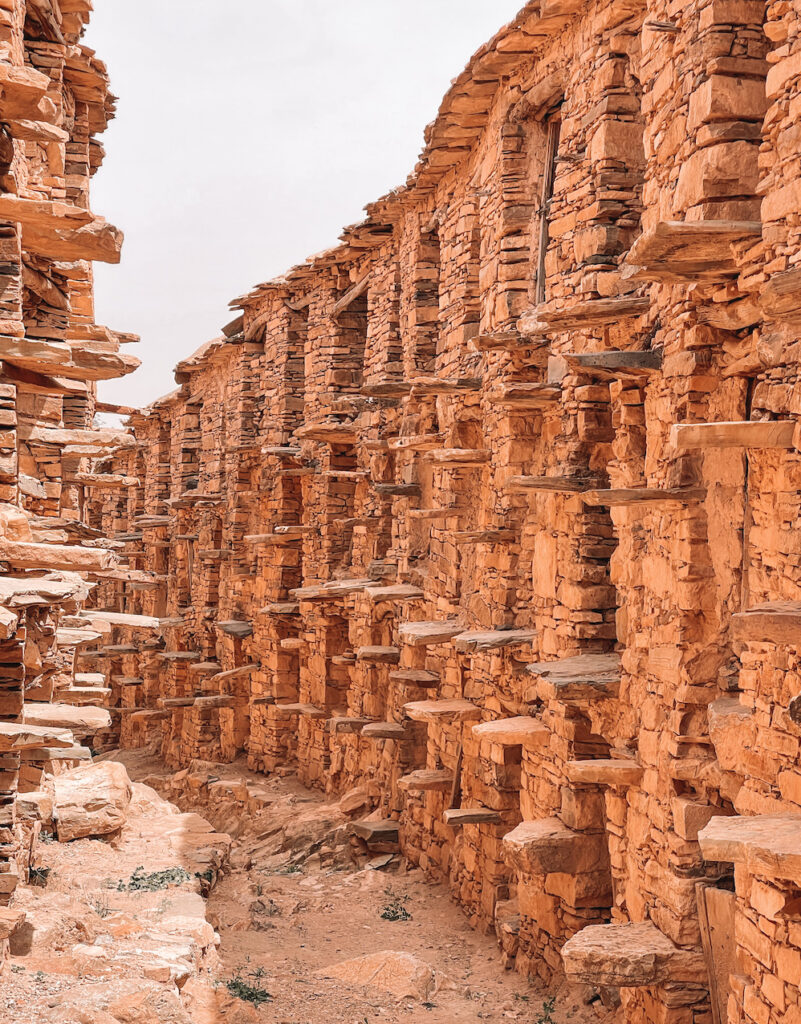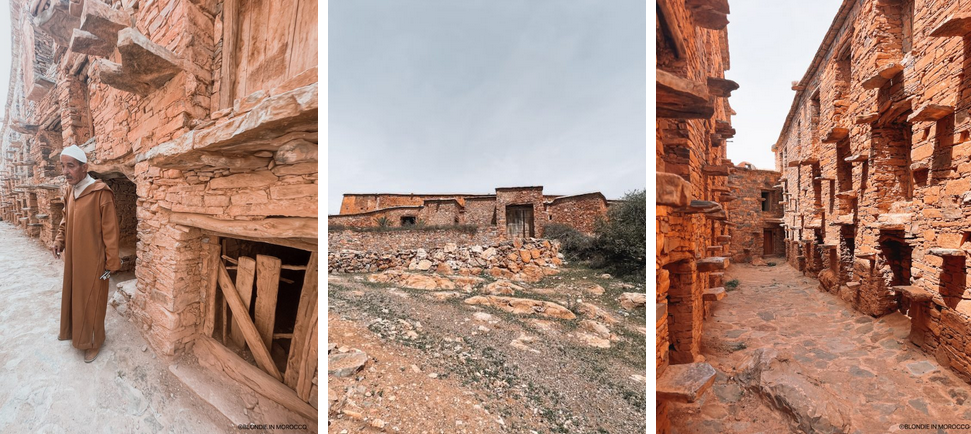Surrounded by olive and palm trees in the Anti-Atlas mountains of Morocco, a centuries-old collective granary preserves the ancient practices of the Amazigh culture. “The traditions are vanishing, but not here,” said a proud village elder.
The imposing, fully functional structure, likely built in the 18th century and restored in 2012, is still used by local residents to store and protect their produce. “We were raised on the tradition of storing our grains, dried fruit, oil and valuables there and we continue to respect it.”
 The granary sits in the village center, protected by a fortified wall with a stone watchtower. In the past, during times of unrest and rebellion against the government, it offered a safe place for storage. Inside, 76 cubicles are arranged in three levels around an open courtyard with a water cistern.
The granary sits in the village center, protected by a fortified wall with a stone watchtower. In the past, during times of unrest and rebellion against the government, it offered a safe place for storage. Inside, 76 cubicles are arranged in three levels around an open courtyard with a water cistern.
There are stocks of barley, dates and almonds, but it is also used to safeguard documents like marriage and birth certificates, religious texts and contracts, and recipes for traditional medicine inscribed on palm stems.
The village’s 63 remaining families use it; others have left, but they keep their archives here. Unwritten laws have kept these granaries sacred and inviolable spaces.
The challenge is to save Morocco’s collective granaries, which have almost disappeared in Algeria, Tunisia and Libya.
You can read the original article at www.france24.com

